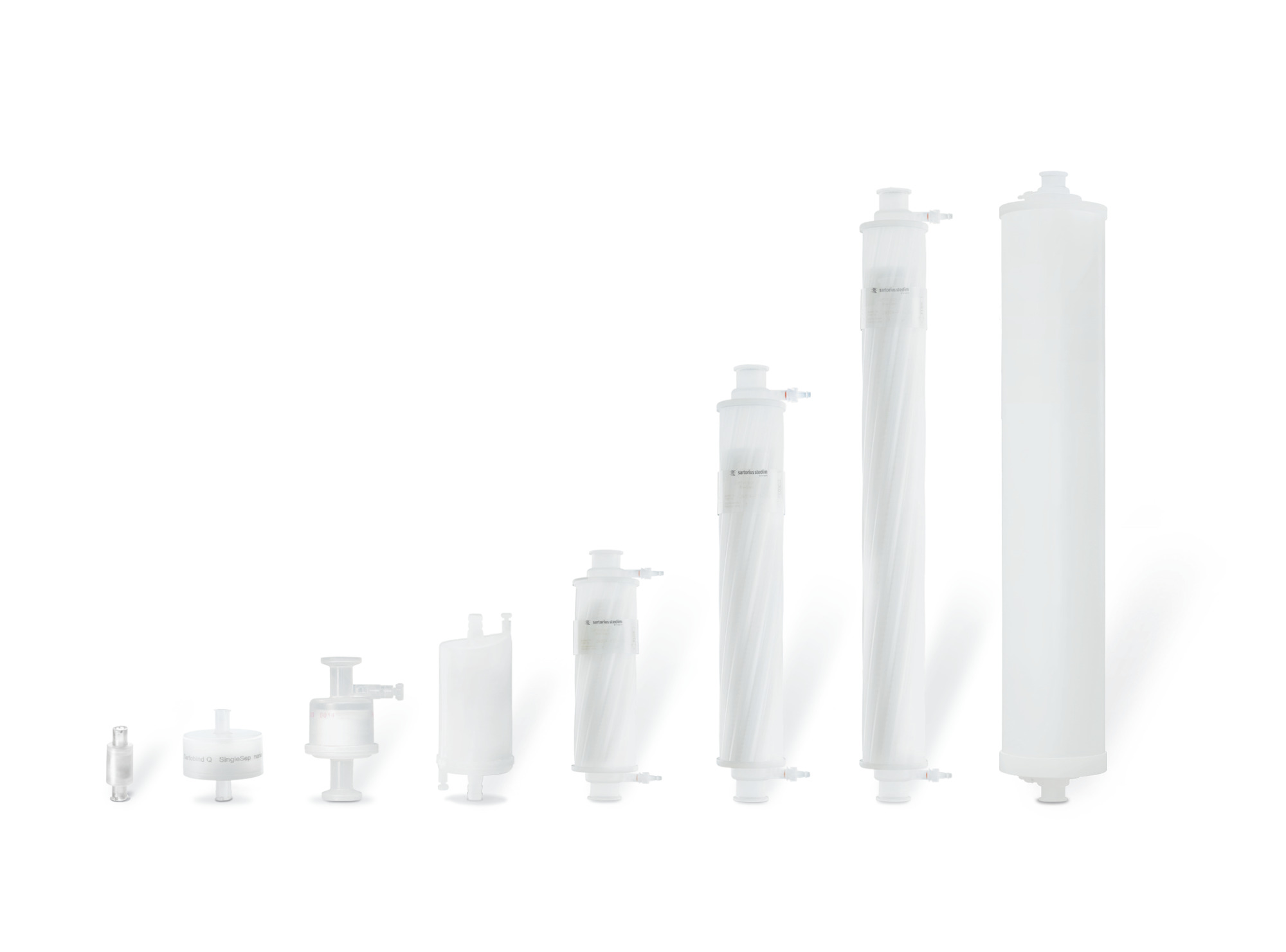
Sartobind® STIC PA | Particle flow and removal
Sartobind STIC® PA removes contaminants with high salt concentrations. Salt-resistant interaction chromatography (STIC) with PA ligand is based on the principles of anion exchange (AEX). AEX is an established method for removing contaminants originating from processes such as host cell proteins (HCP), DNA, endotoxins, and endogenous viruses. It is performed during downstream processing of monoclonal antibodies (mAbs) inflow mode. The process is based on permeability rather than mass, so membrane chromatography (MC) is more favorable than impurity removal columns because the membranes pass up to two orders of magnitude higher flow rate. Membranes are easy to manage and can be disposed of after a single-use, just like a filter, to save on validation costs.
Application:
Current downstream mAb processes consist of at least one initial binding and one step of AEX chromatography. The limitation of AEX steps is often that the Q membrane requires low-salt conditions. In cationic processes (CEX) as the second step of chromatography, the CEX set should be diluted to a conductivity of 4-7 mS/cm to establish the binding conditions for the next AEX step. The Sartobind STIC PA membrane consists of crosslinked, regenerated macroporous cellulose. The primary amine ligand is bound to the matrix at approximately six times the ligand density of that Q membrane. Free amine and high ligand density are crucial for the development of its high salt tolerance.
The Sartobind STIC® absorbent membrane accelerates the production process at high flow rates and opens up new possibilities for the purification of therapeutic proteins and vaccines.
Video content
Traditionally, membrane adsorbers use available filter housings, often ignoring chromatographic process parameters, such as back-mixing effects and elution volume. The new generation of Sartobind® membrane adsorber capsules takes into account these specific requirements and reflects significant advances in binding and elution.
